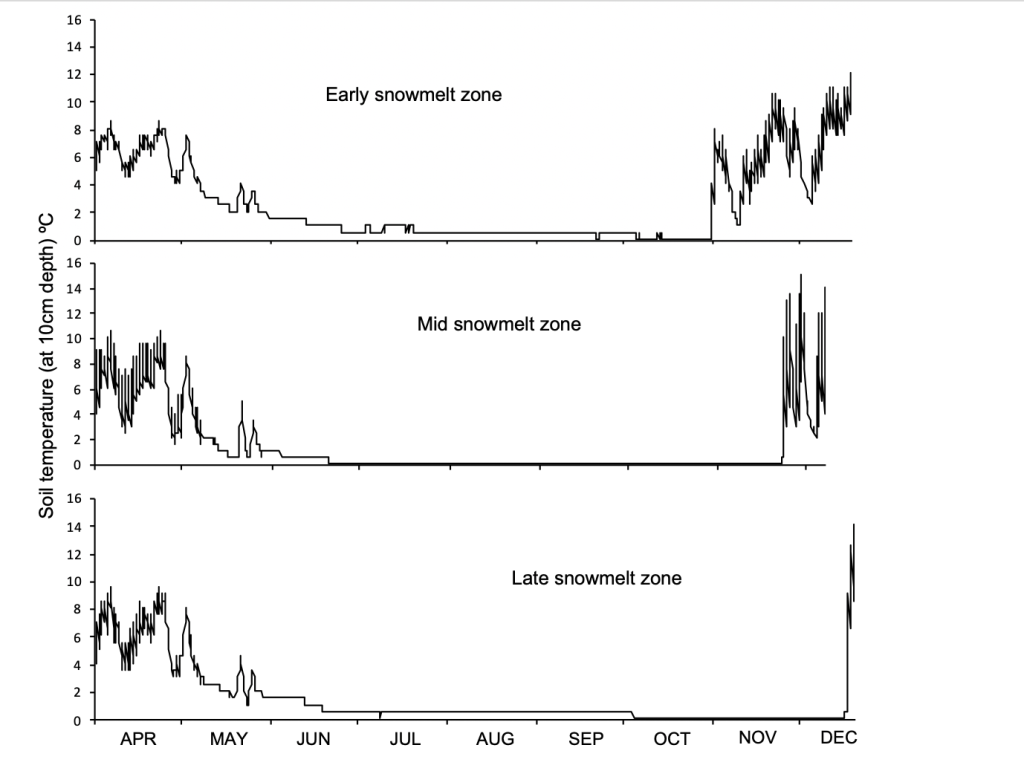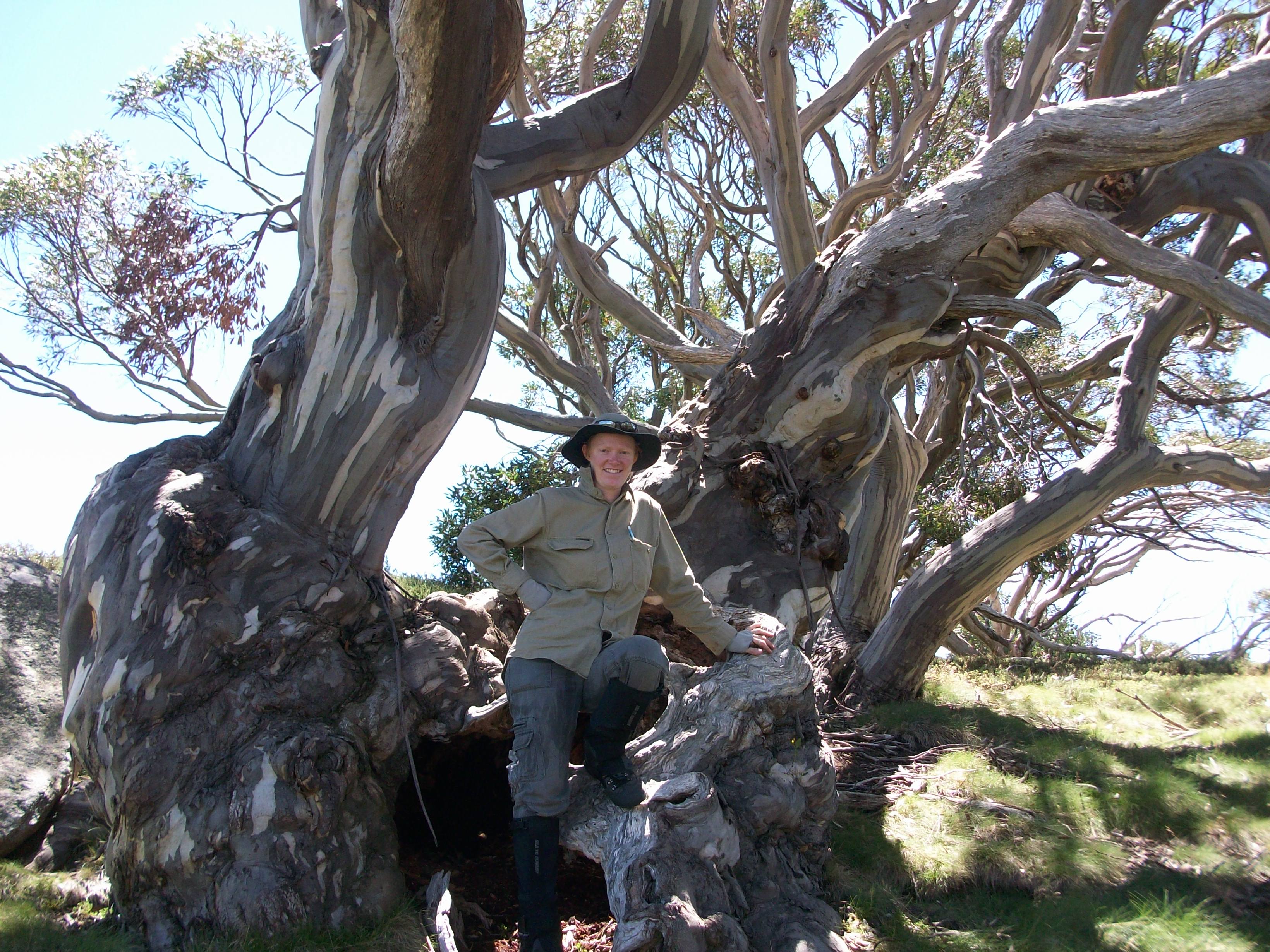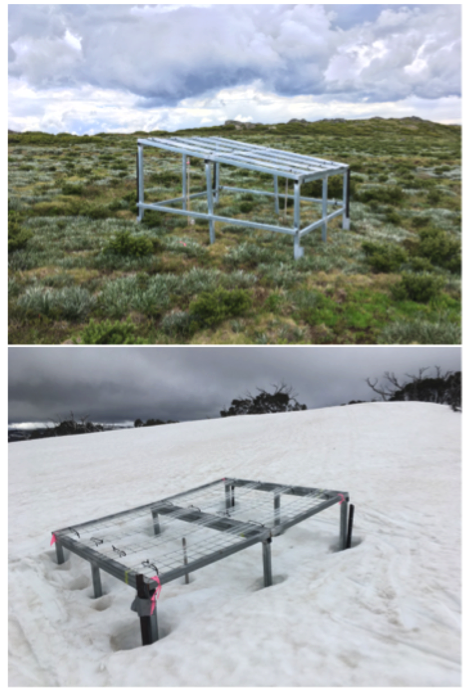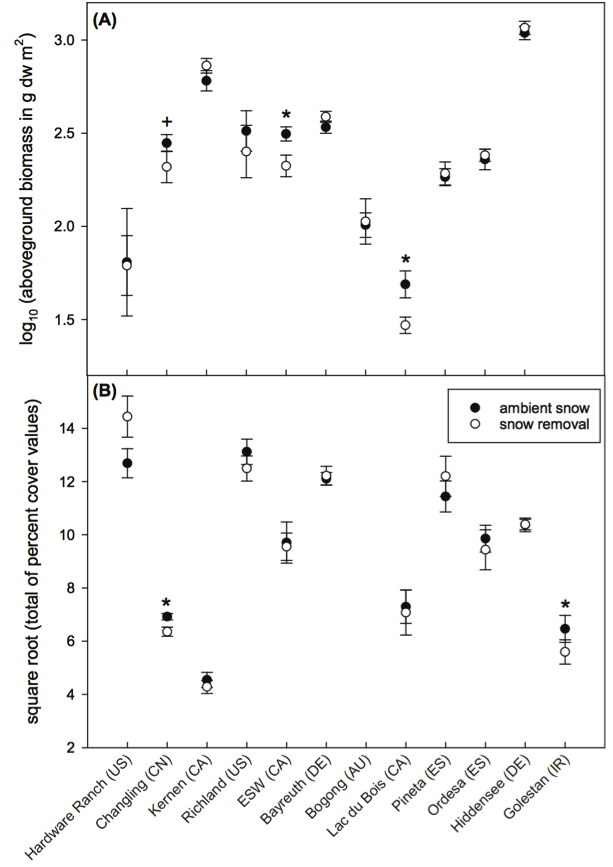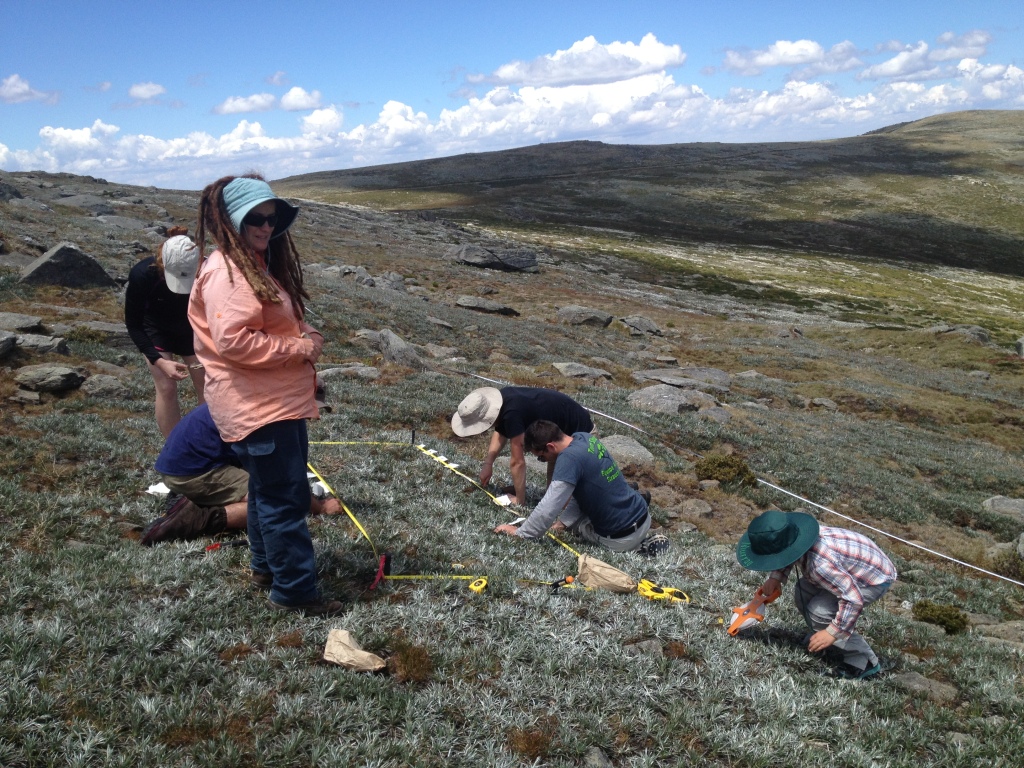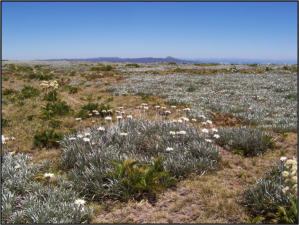
Snowpatches across the Main Range, Kosciuszko NP
A snowpatch (or snowbank) plant community is simply a re-occurring assemblage of plants that exist where snow lies late into the summer. In Australia, this occurs on the south-east side of high elevation ridges and mountain sides, in the lee of the prevailing north-westerly winds. The highest elevation snowpatches can develop impressive cornices of snow that may be up to 10 m or so deep. Snowpatches are one of the rarest communities in the landscape due to topographical constraints and the restricted nature of the alpine zone in general; Australian alpine and subalpine ecosystems occupy less than 1% of the area of the continent, and snow patch herbfields occupy less than 1% of that.

Areas where snow lasts well into summer are obvious in the landscape and create distinct vegetation patterns. But are they true snowpatches?
Are snowpatches really that special?
Snowpatch plant communities, or more correctly defined as ‘snow patch herbfields’, are not explicitly listed under national legislation (The Environment Protection and Biodiversity Conservation Act, 1999; EPBC), however they are within National Heritage areas and therefore considered as ‘matters of National Environmental Significance’ under the EPBC Act, and in Victoria, they are explicitly listed under the Flora and Fauna Guarantee Act 1988 (Government Gazette G 27, p. 1494, published on 5 July 2012). Despite formal recognition, Australian snowpatch vegetation includes many structural and floristic types including ‘tall-alpine herbfield’, ‘short alpine herbfield’, ‘short turf’ and ‘feldmark’. No vascular plant species appear to be totally restricted to snowpatch habitats, adding to the confusion about which patches of snow actually accommodate a snowpatch community. La Trobe University students grapple with this question every summer at Mt Hotham and invariably there is hot debate among the researchers, and bewilderment among the students, trying to discern a snowpatch community from the surrounding the landscape using multi-dimensional scaling and ordination.
Snowpatch dynamics
Snow is the primary environmental filter in a snowpatch community, creating a repeating pattern of melt every year and thus predictable zones of growing season length across the snowpatch. Many species time their growth and phenology on these patterns, as I demonstrated a while back during my honours research:
Venn SE and Morgan JW (2007) Phytomass and phenology of three alpine snowpatch species across a natural snowmelt gradient Australian Journal of Botany 55:450–456
Not all snowpatch species’ flowering is determined by snowmelt date, rather photoperiod also plays a significant role here. Snow also determines the type and function of species that grow in different snowmelt zones; those which are relatively taller and larger-leaved (competitive and productive) tend to be around the perimeter of a snowpatch where snow melts earlier, compared to the shorter and smaller leaved species which grow in the centre of the snowpatch where snow melts last, as we demonstrated for seven snowpatches in Kosciuszko National Park:
Venn SE, Green K, Pickering CM and Morgan JW (2011) Using plant functional traits to explain community composition across a strong environmental filter in Australian alpine snowpatches. Plant Ecology 212:1491-1499
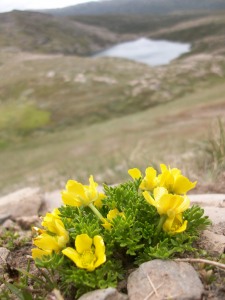
Ranunculus perched high up in a snowpatch community above Blue Lake in KNP
Those competitive and productive species include shrubs and tall grasses, and are the most likely candidates to encroach into snowpatches in the future as global warming essentially weakens the environmental filter currently restraining them from entering these habitats. However, after a re-survey of the Kosciuszko snowpatches, my colleagues and I have revealed that this process is already underway:
Pickering CM, Barros AA, Green K, Venn SE (2014) A resurvey of late-lying snowpatches reveals changes in both species and functional composition across snowmelt zones Alpine Botany DOI:10.1007/s00035-014-0140-0
Notably, between 2007 and 2013 there was an increase in species richness in the late snowmelt zone and an increase in the cover of the tall tussock grass Poa costiniana across all snowmelt zones. This research highlights that snowpatch vegetation can change within relatively short time periods and that snowpatch plant communities may not remain as discrete units in the near future due to the encroachment of more competitive and productive species from the surrounding landscape.
Future patches of snow?
Recently, Australian mainland snowpatches were assessed using the IUCN Red List Criteria for ecosystems, given the present threats from climate change, land use (ski resort development, summer tourism) and invasions by exotic plant and animal species. Evidence is mounting that climate change may also substantially alter vegetation state by increasing rate of encroachment of shrubs as well as tall grasses into snowpatches that are otherwise dominated by short herbs and graminoids. The assessment (citation below) recommends that the ecosystem (IUCN terminology) is ‘Endangered’ due to the restricted geographical distribution, the substantial and highly likely decline in the abundance of snow (the principal abiotic driver of the ecosystem), and the prospect of invasion of many snowpatches by taller-growing native shrubs and grasses thus causing ecosystem collapse.
Williams RJ, Wahren C-H, Stott KAJ, Camac JS, White M, Burns E, Harris S, Nash M, Morgan JW, Venn SE, Papst WA, Hoffmann AA. (2015) An IUCN Red List Ecosystems Risk Assessment for Alpine Snow Patch Herbfields, South-Eastern Australia. Austral Ecology in press

One of the oldest manipulative experiments in the world, the snowfence on the Old Man Range, New Zealand, creates a regular snowdrift since colonised by snowpatch vegetation
It seems that vegetation dynamics are one of the key culprits here. On the flip-side, vegetation dynamics could also produce snowpatches… Really??
An historic snowfence built in 1959 by Emeritus Professor Sir Alan Mark (Otago University, Dunedin) on the Old Man Range in Central Otago, New Zealand, creates a lasting patch of snow in its lee every spring, while snow in the surrounding landscape melts at the usual time. As a consequence, many local specialist snowpatch species have colonised the sheltered area behind the fence, thus creating a functioning snowpatch community, with similar internal dynamics, environmental filtering and vegetation patterns to those in Australia, within a matrix wind-blasted dwarf shrubs.
Mark AF, Korsten AC , Guevara DU, Dickinson KJM, Humar-Maegli T, Pascale M, Halloy SRP, Lord J, Venn SE, Morgan JW, Whigham PA and Nielsen JA. (2015) Ecological responses after 52 years to an experimental snow fence in high-alpine cushionfield, Old Man Range, south-central New Zealand. Arctic, Antarctic and Alpine Research in press
Perhaps patches of snow elsewhere could also become snowpatch communities in the future? As long as there is snow, there will always be places where snow lasts longest in the landscape, and therefore there will be plant species in that location that must either cope with shorter growing seasons or enjoy the protection that lasting snow can offer. If we are willing to continually re-define what constitutes a snowpatch habitat and the species that make a true snowpatch community (or ecosystem), then recognised snowpatches per se are only as threatened as the amount of snow that exists in the alpine landscape.


